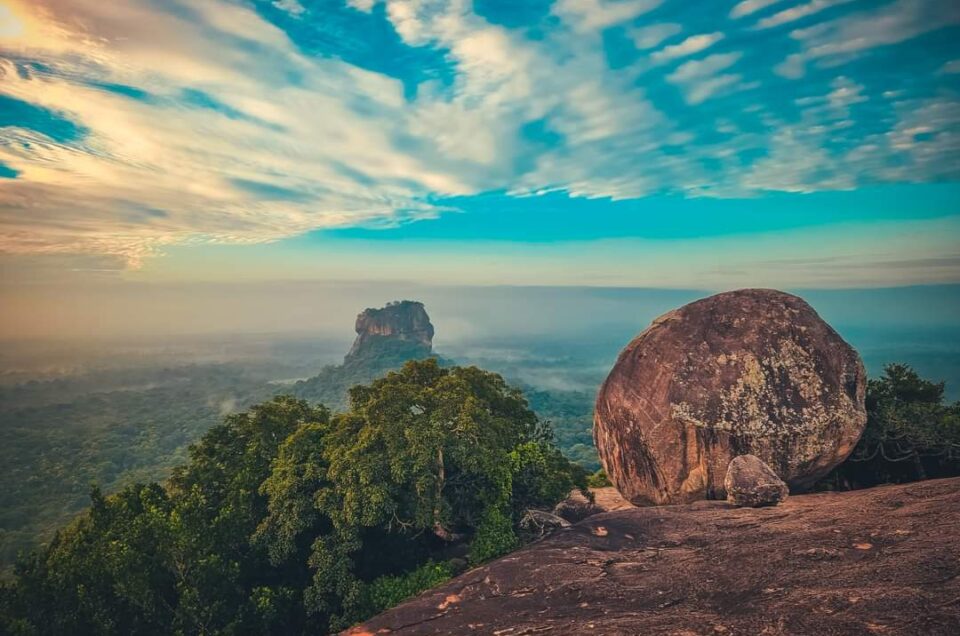Introduction
Sri Lanka, known for its pristine beaches and lush landscapes, also boasts a vibrant and diverse cultural heritage. Shaped by centuries of history, various communities, and influences from around the world, the island’s cultural tapestry is truly remarkable. In this blog post, we invite you to explore Sri Lanka’s rich cultural heritage, a journey through time that reveals the depth of its traditions and the resilience of its people.
Unveiling the Historical Marvels
Ancient Cities: The Cradle of Civilization
Sri Lanka is home to ancient cities like Anuradhapura, Polonnaruwa, and Sigiriya, each with a story to tell. These cities showcase the architectural brilliance and engineering prowess of ancient civilizations, leaving behind a legacy of grandeur and innovation.
Anuradhapura: The Sacred City
Anuradhapura, one of the oldest continuously inhabited cities in the world, served as the capital of ancient Sri Lanka for over a millennium. With its sprawling monastic complexes, magnificent dagobas (stupas), and intricate irrigation systems, Anuradhapura is a living testament to the engineering brilliance and spiritual legacy of its ancient inhabitants.
- Jaya Sri Maha Bodhi: A sacred fig tree, believed to be a sapling from the Bodhi tree under which Buddha attained enlightenment, making it one of the oldest known trees in the world.
- Ruwanwelisaya: A colossal stupa, one of the world’s tallest monuments during ancient times, adorned with intricate carvings and surrounded by smaller stupas.
Polonnaruwa: The Medieval Glory
Polonnaruwa, the second ancient capital of Sri Lanka, flourished during the medieval period. This city boasts impressive ruins that reflect the artistic and architectural achievements of the Polonnaruwa Kingdom. With its palaces, temples, and colossal Buddha statues, Polonnaruwa offers a glimpse into the island’s grandeur during a bygone era.
- Parakrama Samudraya: An expansive ancient reservoir, a testament to the advanced engineering skills of the time, demonstrating the expertise in hydrology and irrigation.
- Gal Vihara: A group of massive stone-carved Buddha statues, showcasing the exceptional craftsmanship and artistic achievements of ancient Sri Lankan sculptors.
Sigiriya: The Lion Rock Fortress
Sigiriya, often referred to as the Eighth Wonder of the World, is a towering rock fortress that dates back to the 5th century. Built atop a massive rock, it houses remnants of a royal palace complex, exquisite frescoes, and beautifully landscaped gardens. The sheer audacity and architectural brilliance of Sigiriya make it a must-visit ancient site.
- Frescoes of Sigiriya: Intricate frescoes depicting celestial maidens, providing a glimpse into the artistic skills and aesthetics of ancient Sri Lanka.
- Lion’s Paw Terrace: The entrance to the palace complex with two enormous lion paws, giving Sigiriya its name and adding to its mystique.
Dutch Colonial Architecture: Glimpses of the Past
The Dutch colonial influence in Sri Lanka has left an indelible mark on the island’s architecture. Explore Galle Fort and other areas to witness the unique blend of European styles with local craftsmanship, a testament to the island’s colonial past.
Celebrating Tradition: Traditional Arts and Festivals
Kandyan Dance: A Cultural Spectacle
Kandyan dance, a traditional Sri Lankan dance form, is a captivating performance that highlights the island’s rich cultural heritage. The vibrant costumes, rhythmic drumming, and expressive movements make it a must-see cultural spectacle.
Esala Perahera: The Grand Festival of Kandy
Esala Perahera is an annual grand procession in Kandy, celebrating the Sacred Tooth Relic of the Buddha. This ten-day festival features beautifully adorned elephants, traditional dancers, and fire dancers, offering a glimpse into the island’s spiritual and cultural traditions.
Understanding Sri Lanka’s Cultural Heritage
Cultural Fusion: A Harmonious Blend
Sri Lanka’s cultural heritage is a beautiful fusion of various influences, including Indian, Arab, Dutch, Portuguese, and British. This blend has created a unique identity that is reflected in its art, architecture, food, and festivals.
Preservation Efforts: Safeguarding the Legacy
Efforts to preserve and protect Sri Lanka’s cultural heritage are ongoing. Various organizations, along with local communities, are actively involved in restoration projects and educational initiatives to ensure this legacy is passed on to future generations.
Frequently Asked Questions (FAQs)
Q1: What are some traditional Sri Lankan dishes to try?
A1: Traditional Sri Lankan dishes include “Rice and Curry,” “Hoppers,” “Kottu Roti,” “String Hoppers,” and “Lamprais,” each offering a burst of flavors and spices.
Q2: How can I explore Sri Lanka’s cultural heritage responsibly?
A2: To explore responsibly, respect local customs, support artisans and traditional crafts, follow conservation guidelines at historical sites, and opt for eco-friendly tours.
Q3: Are there any restrictions on photography at cultural sites?
A3: It’s advisable to seek permission before photographing individuals, especially in religious settings. Some cultural sites may have restrictions on photography for preservation purposes.
Q4: What is the significance of the Sri Lankan New Year (Aluth Avurudu)?
A4: The Sri Lankan New Year (Aluth Avurudu) is a time of great cultural significance, symbolizing the transition from the old year to the new. It’s a time for family gatherings, rituals, and traditional celebrations.
Q5: Are there specific etiquettes to follow when visiting temples?
A5: Yes, when visiting temples, dress modestly, remove your shoes, and adhere to the rules and customs. It’s important to maintain silence and respect the sanctity of the religious space.
Conclusion
Sri Lanka’s cultural heritage is a tapestry woven with threads of history, tradition, and diversity. From ancient cities to vibrant festivals, the island offers a captivating journey through time. Discover the beauty of its cultural legacy and embrace the rich traditions that continue to thrive, bridging the past and the present.




